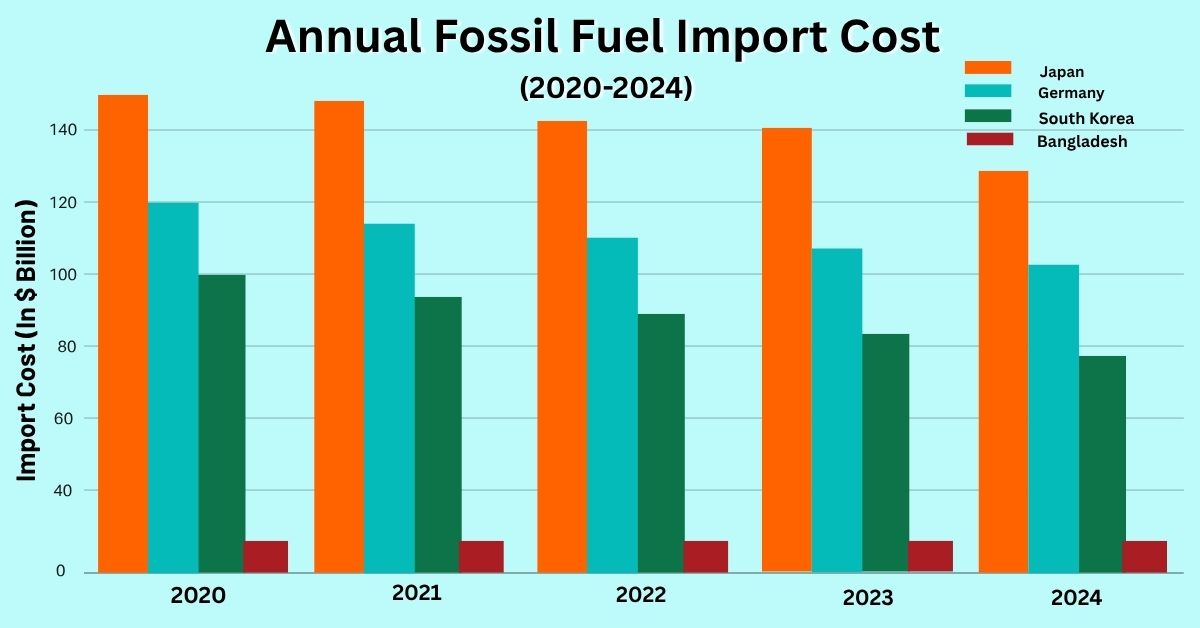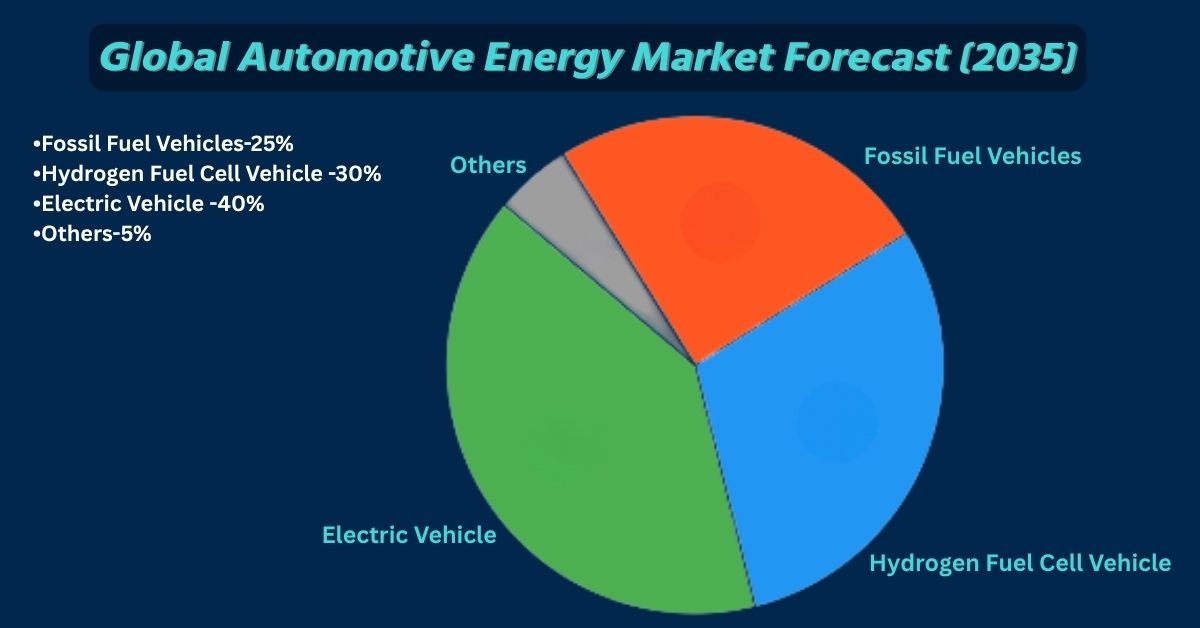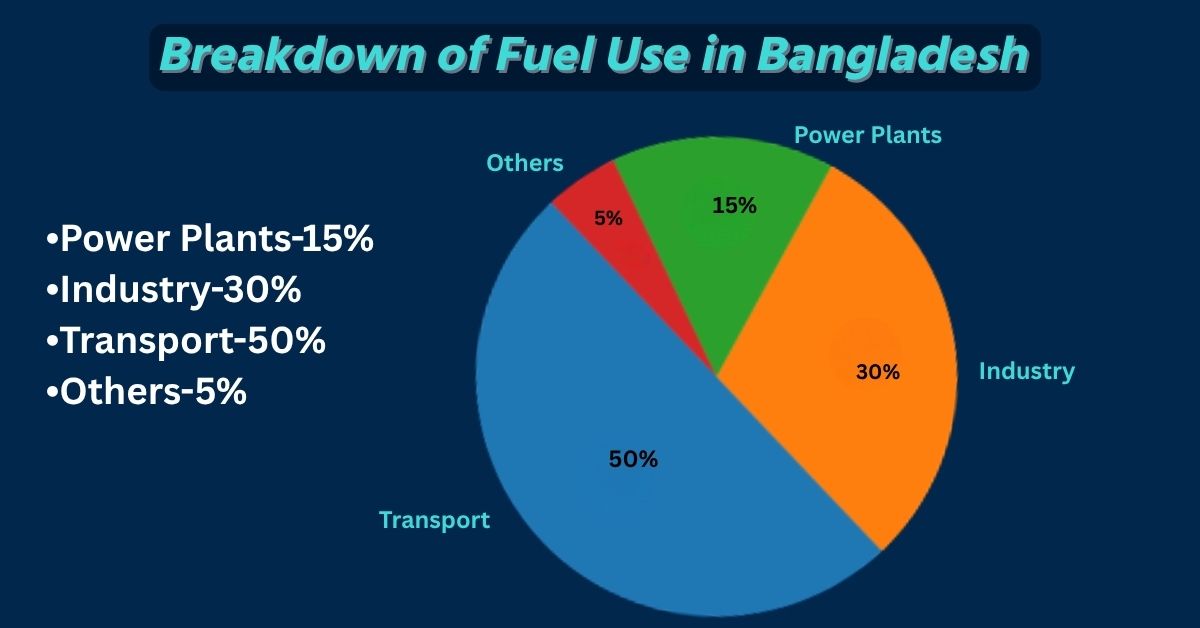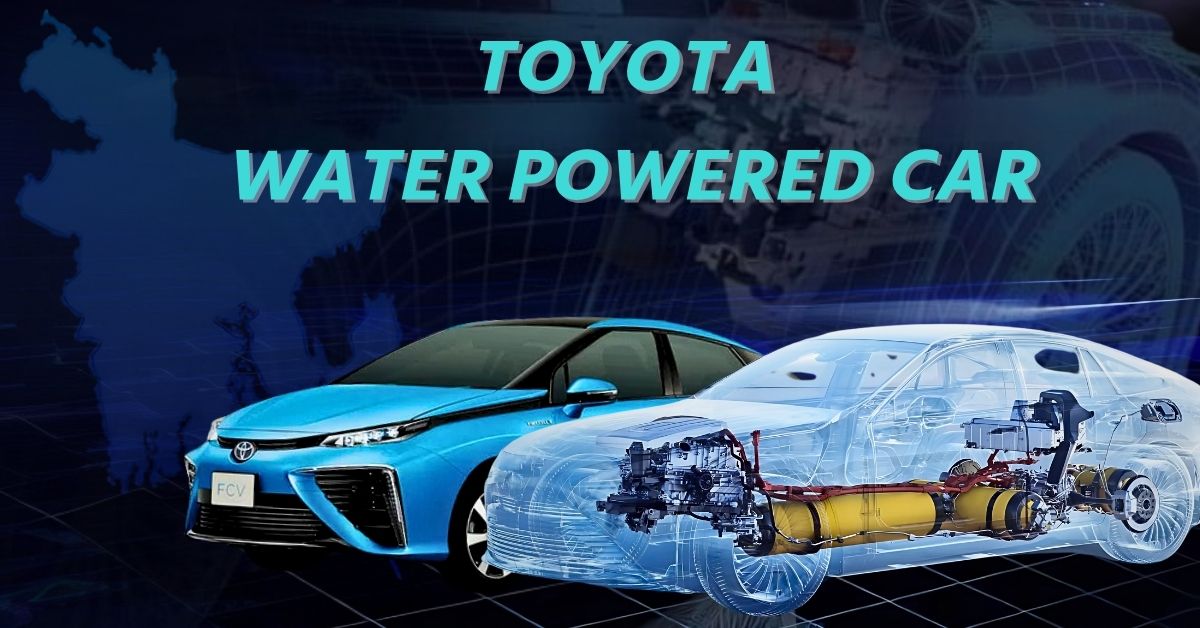1.Introduction
“Water-powered car” is a vehicle that would use water as its primary fuel source or generate fuel from water on board with no external energy input. The process typically involves electrolysis, where an electrical current splits water molecules into hydrogen and oxygen. This is largely a misconception or a misinterpretation of technology and pure water cannot be burned as a fuel to generate energy.
Now a days because of several reasons why the fuel prices increasing and it become a pressing concern for millions of people across the globe. The cost of fueling a car has turned personal transportation and it become a reality for countless individuals and businesses in Bangladesh and the globe. This car running directly on water that may sound like science fiction but Toyota’s groundbreaking advancements in hydrogen fuel cell technology.
Among the world’s leading automakers, Toyota has always been at the forefront of sustainable innovation. The core concept revolves around using water to produce hydrogen, which would then be burned to generate power. They use hydrogen as a fuel, which is produced from other sources, and the exhaust is water vapor. This makes them a zero-emission alternative to traditional gasoline cars and Toyota investing heavily in research and development, not only for passenger vehicles like the “Mirai” but also for commercial applications.
2.Background of Toyota’s Water-Powered Car
“Water-powered car” in connection with Toyota is a simplification and, to some extent, a misrepresentation of their actual technological pursuit “Hydrogen Fuel Cell Vehicles (FCEVs)”. This idea was not come suddenly, as we know the environmental situation and this helps them to think about a car which will not produce black smoke. This will be a eco-friendly car and not harmful for air, human health.
2.1. The Origin of the Idea how it comes?
“Water-fueled car” is an automobile that derives its energy directly from water. Toyota’s journey into hydrogen fuel cells wasn’t a sudden inspiration but a methodical and a long-term strategic. Now days growing climate change awareness, in the 1990s, the scientific community was increasingly vocal about the threats of climate change. Toyota, a major global automaker, recognized its significant role and responsibility in this environmental landscape. After that they start thinking about special type transport which will run through water instead of fuel.
This environmental change has direct impacts on public health, creating a strong motive for cleaner transportation. The nature of fossil fuels and the geopolitical instability associated with their supply presented as a long-term economic and energy security risk. Toyota wants alternative which will have more sustainable energy carriers.
Toyota had already demonstrated its commitment to environmental innovation with the launch of the “Prius” in 1997 which is the world’s first mass-produced hybrid electric vehicle. Toyota’s vision extended beyond simply “better” fuel economy and they aimed for true zero-tailpipe emissions. Among various alternative propulsion methods, hydrogen emerged as a highly promising candidate. The fundamental chemical reaction of hydrogen combining with oxygen to produce only electricity and water was incredibly appealing for its inherent cleanliness.
- 1997: Toyota launches the ”Prius” First mass-produced hybrid vehicle Sparked global hybrid revolution
- 2014: Toyota introduces the ”Mirai” One of the world’s first hydrogen fuel cell vehicles Emits only water vapor
2.2.The Background Story and Reasons for Toyota’s Deep Investment
Toyota began serious research and development into fuel cell technology as early as 1992. But their hard work won’t gave any result and they didn’t just react to market trends that aimed to shape the future of mobility. In the early 2000s, the FCEV-1 (1996) and subsequent FCHV series demonstrated their continuous progress, refining the technology, improving efficiency, and tackling engineering challenges related to hydrogen storage, safety, and fuel cell stack durability.
In 2015, Toyota formalized its ambitious environmental goals with the “Toyota Environmental Challenge 2050.” This comprehensive framework outlined six major challenges across its entire value chain. “New Vehicle Zero CO2 Emissions” challenge which is a key pillar of this challenge because they aimed to reduce CO2 emissions from new vehicles by 90% by 2050 (compared to 2010 levels), where battery electric vehicles might face limitations.
Countries like Japan who’s are depending on imported oil and developing an alternative energy source like hydrogen which offered a path to greater energy independence and resilience against volatile global fuel markets. Toyota recognized that hydrogen could be produced from diverse sources, including renewable electricity, natural gas, and even biomass. So, Toyota quickly understood that hydrogen fuel cell technology’s potential extended far.
Toyota grasped that simply building a great FCEV wasn’t enough. A robust hydrogen ecosystem was essential, encompassing production, storage, distribution, and a widespread network of refueling stations. This led them to actively collaborate with governments, energy companies, and other industries worldwide to accelerate the development of this infrastructure. Their recent establishment of “Hydrogen Factories” in Japan, Europe, and North America underscores their commitment to scaling up the entire hydrogen value chain.
Read More: Adidas and Puma: How a Sibling Rivalry Gave Rise Two Giants of the Sports World
3.How the Toyota Water-Powered Car Works

Toyota developed hydrogen fuel cell cars where hydrogen can be produced from water. The car uses hydrogen gas, stored in a high-pressure tank not plain water. Hydrogen cars like the “Mirai” are real, but infrastructure is still developing and they only emit clean water vapor as exhaust.
Still now this concept is a myth rooted in a misunderstanding of their advanced technology that, what Toyota does produce, and has significantly invested in for decades, are hydrogen Fuel Cell Electric Vehicles (FCEVs), such as the “Toyota Mirai”. Unlike gasoline or diesel cars that burn fuel, or even battery electric vehicles that rely on stored electricity, hydrogen FCEVs generate their own electricity onboard through an electrochemical reaction.
3.1. Components and Their Functions
•Hydrogen Storage Tanks: These are the primary “fuel tanks” of the vehicle. They store highly compressed hydrogen gas (H2).Toyota uses multiple high-pressure tanks, typically storing hydrogen at 70 MPa (megapascals), which is approximately 700 bar or 10,000 psi. These tanks are engineering marvels, constructed with multiple layers of strong materials like carbon fiber-reinforced plastic (CFRP) to ensure extreme safety and durability, even in collisions.
•Air Intake System: Draws ambient air, which contains oxygen (O2), into the vehicle. The air is filtered to remove impurities before it reaches the fuel cell, ensuring the purity required for the reaction.
- The Fuel Cell Stack (The “Power Plant”): This is the core of the system where hydrogen and oxygen are converted into electricity, water, and heat. The stack is comprised of hundreds of individual fuel cells, essentially a sandwich of three main layers:
- Anode (Negative Electrode): Where hydrogen gas is introduced. It has a catalyst layer (typically platinum-based) on its surface.
- Proton Exchange Membrane (PEM): A thin, specially designed polymer membrane permeable only to positively charged hydrogen ions (protons), but not to electrons. This is crucial for separating the charges and creating an electrical current.
- Cathode (Positive Electrode): Where oxygen from the air is introduced. It also has a catalyst layer on its surface.
Toyota has developed a “humidifier-less” fuel cell system. Instead of relying on an external humidifier, they ingeniously recirculate some of the water produced within the fuel cell stack back to the PEM to keep it hydrated. This internal circulation improves efficiency, reduces complexity, and contributes to the compact size of their fuel cell module.
3.2. The Electrochemical Reaction (Step-by-Step)
•Hydrogen at the Anode: Hydrogen gas (H2) from the tanks is fed into the anode side of the fuel cell.
•Electron Separation: At the anode’s catalyst layer, the hydrogen molecules are split. Each hydrogen atom loses its electron, becoming a positively charged hydrogen ion (a proton, H+).
H2→2H+ +2e−
•Electron Flow (Electricity): The electrons (e−) cannot pass through the PEM. Instead, they are forced to travel through an external circuit – this circuit is what carries the electrical current that powers the vehicle’s electric motor and other auxiliary systems.
•Proton Migration: The positively charged hydrogen ions (protons, H+) do pass through the proton exchange membrane to the cathode side.
•Oxygen at the Cathode: Simultaneously, oxygen gas (O2) from the air intake is fed to the cathode side.
•Water Formation: At the cathode’s catalyst layer, the protons (H+), the electrons (e−) returning from the external circuit, and oxygen (O2) combine to form water (H2O). Heat is also generated as a byproduct of this reaction.
O2+4H+ +4e− →2H2O
•The net result across the entire fuel cell stack is:
2H2(hydrogen)+O2(oxygen)→2H2O (water)+Electrical Energy + Heat
•Power Control Unit (PCU) and Battery: The electricity generated by the fuel cell stack is sent to a Power Control Unit (PCU). This unit manages the flow of electricity, optimizing its distribution to the electric motor and the onboard battery. Toyota FCEVs also incorporate a small nickel-metal hydride (NiMH) or lithium-ion battery, similar to those found in their hybrid vehicles. This battery serves several crucial roles:
- Energy Buffer: It stores energy recaptured during regenerative braking (when the car slows down, the motor acts as a generator).
- Peak Power Delivery: It provides supplementary power to the electric motor during acceleration or when high power demands exceed what the fuel cell can immediately supply.
- System Efficiency: It allows the fuel cell stack to operate at its most efficient steady state, while the battery handles transient power demands, improving overall system efficiency and responsiveness.
•Electric Motor: The electricity from the fuel cell stack and/or the battery powers the electric motor, which in turn drives the wheels of the vehicle.
Driving Experience: This results in a smooth, quiet, and responsive driving experience, characteristic of electric vehicles, with instant torque delivery.
•Water Emission: The “Tailpipe”, The water produced in the fuel cell reaction is pure and typically expelled as water vapor or liquid water through a vent pipe, often located discreetly beneath the vehicle. There is a button in the Mirai that allows the driver to manually “dump” any remaining water from the system at the end of a journey.
4. Is it Relevance for Bangladesh?-Impact if Introduced in Bangladesh
As Bangladesh is a developing country but fully depend in fuel. The idea of lunching Toyota’s water-powered (hydrogen fuel cell) car is not only relevant idea but also a potentially transformative. Because of rural areas consistently ranks among the most air-polluted cities globally and vehicle emissions are a major contributor to this. It heavily reliant on imported fossil fuels. This makes its economy vulnerable to global price hicks. All those problems can be reduce by using this water-powered car.
4.1.Environmental Relevance: A Cleaner Future for Bangladesh
Zero Tailpipe Emissions, the most significant immediate benefit for Bangladesh as FCEVs emit only water vapor. As we know the main reason of air pollution is car smoke and reduced pollution through cars can lead to cleaner city air and lowering disease rates and improving public health.
Countries like Bangladesh has committed to reduce emissions under international climate agreements. Hydrogen vehicles would help meet those goals more efficiently. It will also helps to reduction in respiratory illnesses, cardiovascular diseases, and other health issues linked to air pollution. This translates into lower healthcare costs for individuals and the nation, and a healthier, more productive workforce.
Read More: “Audio Overview” is coming to Google Search, what benefits will be available?
4.2. Economic and Energy Impacts
Bangladesh imported fuel from many countries and it take up a large portion of Bangladesh’s foreign currency reserves. The country spends over $8 billion importing fossil fuels. If Toyota’s water-powered (hydrogen fuel cell) car will introduce in Bangladesh there are lots of benefits, such as fuel saving( less spending on oil imports and the economy may stronger), job creation (a new hydrogen economy would create thousands of skilled and semi-skilled jobs), energy independence (using solar, wind, or hydropower to generate hydrogen would make Bangladesh more energy self-reliant).
4.3.Lifeline for Middle-Income Families
Most of the families in Bangladesh can’t barrier a car because of high cost of petrol and diesel. But now days because of the price also hard for those families who can bare a car to carry a car. If the hydrogen infrastructure is established and hydrogen production becomes cost-effective, the cost of “fueling” an FCEV could become more stable and potentially lower than volatile fossil fuel prices.
For middle-income families, daily cost of transporting goods would be less impacted by international oil price volatility. It might enable more efficient and wider-ranging public transport options, offering reliable and potentially more affordable alternatives to private vehicles.
4.4. Public Transportation Potential
Hydrogen-powered buses and trucks could reduce the cost and pollution of public and commercial transportation:
•Hydrogen buses for city transport = cleaner air, cheaper operations
•Long-haul trucks running on hydrogen = savings for businesses and consumers
•School and government vehicles = setting a green example for society
5.Will Toyota’s “water-powered car” Beneficial for Middle-Class Families in Bangladesh
As Bangladesh is a developing country but fully depend in fuel. The idea of lunching Toyota’s water-powered (hydrogen fuel cell) car is not only relevant idea but also a potentially transformative. The significant infrastructural development and cost reductions. FCEVs hold the potential to greatly benefit middle-class families in Bangladesh which will make more stable and potentially lower running costs, improved health due to cleaner air, and new economic opportunities.
5.1. Reasons Why It Matters for Middle-Class Families
For several in Bangladesh, high fuel prices make car ownership a luxury and because of this public transportation is often overcrowded. The middle class in Bangladesh represents a large and growing population such as, salaried professionals, small business owners, private service workers, young urban families. This demographic typically dreams of owning a personal vehicle, but they’re often held back by high petrol and diesel prices, frequent vehicle maintenance, rising costs of living Hydrogen cars offer a way to reduce recurring expenses while also providing reliable and clean transport.
5.2. How Hydrogen Cars Benefit the Middle Class
This cost will be different if the vehicle lunched in Bangladesh. If we see the price of petrol and diesel BDT 10–12 per km but the price of hydrogen is BDT 3–4 per km. So a middle-income family can afford a car. Hydrogen cars use fuel cells, which have fewer moving parts than internal combustion engines that means fewer breakdowns, less money spent on repairs, less time in workshops. Battery electric vehicles that often take hours to recharge, hydrogen cars can be refueled in 3–5 minutes and can drive over 500–700 km on a single tank. This is especially helpful for, intercity family trips, long office commutes, emergencies. Most middle-class families live in densely populated urban or semi-urban areas, where air pollution from traffic is a daily issue, so it can be reduce.
6.Economic Impact Globally and in Bangladesh
The global hydrogen fuel cell vehicle is a new concept in marketplace and its not only just an environmental revolution but also an economic one. It was valued at USD 2.32 billion in 2024 and is anticipated to reach around USD 162.30 billion by 2034, demonstrating a healthy Compound Annual Growth Rate (CAGR) of 52.90%. This growth is a significant shift in the automotive and energy sectors. Countries like Bangladesh, can create several job sectors which heavily rely on fuel imports, this innovation presents a timely and potentially game-changing opportunity.
6.1. Global Economic Impact because of “Water-powered car”
New Industry Creation and Job Growth: The scaling up of FCEV production will create jobs in vehicle manufacturing, fuel cell component production and assembly. Building a hydrogen refueling infrastructure (production plants, pipelines, refueling stations) will require massive investments and create employment in engineering, construction, and operations. Continuous innovation in hydrogen technology will drive further R&D jobs.
While potentially reducing jobs in fossil fuel extraction and refining, it will create new opportunities in renewable energy generation (for green hydrogen) and hydrogen distribution. Every single year, several countries spending a huge amount in fossil fuel import. Here’s the list how much they spend last five year. It visually highlights how hydrogen and alternative energy transitions could reduce import, especially in countries like Bangladesh.

Energy Security and Reduced Volatility: Which countries depending on imported oil and gas can significantly reduce their dependence by transitioning to hydrogen, especially if it’s produced domestically from renewable or sustainable sources. This enhances national energy security. A diversified energy mix, with a growing share of domestically produced hydrogen, can mitigate the impact of volatile global fossil fuel prices on national economies and consumer costs.
Global Automotive Energy Market Forecast Pie Chart for 2035, it visually presents projected shares of 40% Electric Vehicles, 30% Hydrogen Fuel Cell Vehicles, 25% Fossil Fuel Vehicles, 5% Others.

Economic Growth and Investment: Hydrogen economy attracts substantial investment from governments, private companies, and international organizations. This creates a new economic sector and innovation across related industries. The fuel cell technology for vehicles can have spin-off applications in other sectors, such as stationary power generation, material handling, and maritime transport and stimulating economic activity.
Environmental Externalities and Public Health Savings: Eliminating tailpipe emissions (like NOx, SOx, particulate matter) from vehicles significantly reduces air pollution, leading to lower healthcare costs associated with respiratory and other pollution-related diseases. Reduced greenhouse gas emissions contribute to meeting climate targets, potentially avoiding future economic damages from extreme weather events and climate disruptions.
6.2.Economic Impact in Bangladesh because of “Water-powered car”
Reducing Fuel Import Costs: Bangladesh is depending on imported fossil fuels, making its economy vulnerable to global price shocks. A shift to hydrogen, particularly “green hydrogen” produced domestically that could reduce the national fuel import bill, strengthening the balance of payments.
According to economic reports, the country imports 100% of its fuel needs, amounting to over $8 billion per year and because of this pressure on the national budget, increases inflation, and limits foreign exchange reserves. If hydrogen fuel produced domestically from water using solar or wind power can replace petrol and diesel in transportation, Bangladesh stands to, save billions annually, reduce the trade deficit, strengthen energy independence.

Expanding Clean Transport Infrastructure: Introducing hydrogen-powered vehicles would require Bangladesh to invest in, electrolysis plants (to produce hydrogen), fuel cell maintenance and training centers, refueling stations and green vehicle assembly facilities. Though these are long-term investments, they will create thousands of skilled jobs, foster local innovation, and contribute to building a future-proof energy ecosystem.
Job Creation and Industrial Development: FCEV manufacturing might be distant and Bangladesh could develop industries for hydrogen production, especially green hydrogen from its renewable potential. Hydrogen storage solutions, and potentially assembly or maintenance of FCEV components. A national hydrogen infrastructure would create thousands of jobs in construction, engineering, maintenance, and logistics. This transition would investment in training and education to develop a skilled workforce capable of handling hydrogen technologies.
Supporting Middle-Class Mobility: For several in Bangladesh, high fuel prices make car ownership a luxury and because of this public transportation is often overcrowded. If Bangladesh lunched this Hydrogen-powered vehicles it would be a far cheaper and more predictable alternative to diesel or petrol vehicles. This would allow afford private transport, spend less on fuel, avoid economic shocks caused by sudden oil price hikes for middle-income families.
7.Broader Impact: Fuel Crisis and Environmental Benefit
The broader impact of adopting hydrogen fuel cell technology (FCEVs) such as Toyota’s “water-powered” car, have far-reaching implications beyond just affordability and innovation. These vehicles offer a two-in-one solution to two of the biggest global challenges, energy insecurity and climate change. The “fuel crisis” primarily refers to the volatility and scarcity of fossil fuels (petrol, diesel, natural gas) and their geopolitical implications.
7.1.Fuel Crisis: Breaking the Cycle of Dependency
As fuel prices based on geopolitical conflicts, market instability, and natural disasters increasing day by day. Hydrogen Vehicles Help Address the Fuel Crisis as,
Locally Sourced Fuel: Hydrogen can be produced from water using electricity. If that electricity comes from solar, wind, or hydro, it becomes a renewable and domestic fuel source.
Reduced Import Pressure: By investing in hydrogen production, Bangladesh can cut its multi-billion-dollar annual fuel import cost, freeing up foreign reserves for education, infrastructure, and healthcare.
Stabilized Fuel Prices: Local hydrogen production leads to stable and predictable energy prices, unlike oil, which is vulnerable to international market fluctuations.
7.2.Environmental Benefits: A Clean Future in Motion
Hydrogen cars emit only water vapor and no carbon dioxide (CO₂), nitrogen oxides (NOx), or particulate matter just clean. Cities like Dhaka, Chattogram, and Khulna, where air quality often falls to hazardous levels, hydrogen vehicles can help reverse pollution trends by replacing diesel and petrol engines. Environmental Benefits are,
•Zero Emissions
•Air Pollution Reduction
•Noise Pollution Reduction
•Support for Clean Energy Grid
7.3. Ripple Effect: Long-Term Sustainability
The introduction of hydrogen-powered vehicles doesn’t only benefit individual users it can transform entire systems. In Bangladesh’s context, the broader impact is even more significant as floods and climate threats may be reduced by cutting transport emissions, energy resilience becomes possible by diversifying sources, youth employment can grow in clean energy sectors, urban planning becomes easier with reduced air and noise pollution.
8.Challenges and Limitations
For a country like Bangladesh, there are significant challenges and limitations that must be addressed for widespread adoption to become a reality. From technical barriers to infrastructure gaps, there are several challenges that must be addressed before these vehicles can become mainstream.
8.1.Lack of Hydrogen Infrastructure
As country like Bangladesh this is the biggest challenge because of the absence of refueling infrastructure. That’s why every year Bangladesh import fuels and petrol stations that are found in every city, hydrogen refueling stations are rare. In Bangladesh, no hydrogen production facilities currently exist at scale, no public hydrogen refueling stations have been built, transporting and storing hydrogen safely requires special technology, which is costly and complex.
8.2. High Initial Vehicle Cost
Vehicle like ”Toyota Mirai”, are significantly more expensive than petrol, diesel, or even electric cars. Because of expensive fuel cell materials (like platinum), limited global production, lack of local assembly plants. For middle-income families in Bangladesh, even though fuel savings may occur over time, the upfront purchase cost remains a major barrier.
8.3. Hydrogen Production is Still Energy-Intensive
Green hydrogen, is still energy-intensive and this is a critical challenge and limitation that needs to be thoroughly understood when discussing the viability of a hydrogen economy and FCEVs, especially in a country like Bangladesh. This process involves using electricity to split water (H2O) into hydrogen (H2) and oxygen (O2). If this electricity comes from non-renewable sources, the environmental benefits are diminished. Green hydrogen (from solar or wind) is ideal, but costlier and less available. Bangladesh’s power grid still relies heavily on natural gas and coal.
8.4.Technological Maturity & Safety Concerns
Hydrogen fuel cell vehicles (FCEVs) like Toyota’s in a context like Bangladesh, it’s vital to address both their current technological maturity and the associated safety concerns. Hydrogen fuel cell technology has advanced significantly over the past decades, moving from laboratory curiosities to commercially available vehicles. FCEVs like the Toyota Mirai and Hyundai Nexo are commercially available and have been on the market for several years. There’s increasing focus on FCEVs for buses, trucks, and even trains and ships, where battery electric solutions might be less practical due to weight or charging time.
The core component, the Proton Exchange Membrane (PEM) fuel cell stack, has seen significant improvements in power density, efficiency, durability, and cost reduction. Explosion risks due to hydrogen’s flammability if not handled properly. Need for high-pressure tanks to store hydrogen safely. Complexity in maintaining or repairing hydrogen systems, especially in countries with limited technical expertise.
8.5. Policy and Regulatory Barriers
Introducing and scaling up hydrogen fuel cell vehicles (FCEVs) like Toyota’s Mirai in Bangladesh hinges significantly on overcoming substantial policy and regulatory barriers. While Bangladesh has recently shown interest in hydrogen, and there have been discussions about a “hydrogen policy,” a comprehensive, overarching national hydrogen strategy is largely absent or still in very early stages of development. This lack of a clear roadmap creates uncertainty for potential investors (both domestic and international).
No specific regulations for the large-scale production of hydrogen, especially green hydrogen from electrolysis, including standards for purity, energy consumption, and environmental impact. Safe handling of hydrogen requires stringent regulations for storage (tanks, pipelines, cryogenic tanks), transportation (trucks, ships), and dispensing.
Specific standards and certification processes for FCEVs, including their safety features, crashworthiness related to hydrogen systems, and environmental performance, would need to be established by the Bangladesh Road Transport Authority (BRTA) or a similar body. Currently no legal framework, subsidy program, or government policy focused on hydrogen as a transport fuel, as a result, no tax incentives for hydrogen vehicle buyers, no budget allocations for hydrogen R&D, lack of coordination among energy, environment, and transport ministries.
8.6. Global Competition and Technology Gap
This isn’t just about obtaining vehicles, it’s about building an entire ecosystem in a rapidly evolving global landscape. The global race for clean mobility is intense, with two primary contenders Battery Electric Vehicles (BEVs) and Fuel Cell Electric Vehicles (FCEVs).BEVs currently hold a significant lead in the global passenger car market.
In 2024, global electric car sales (predominantly BEVs) exceeded 17 million, representing over 20% of new cars sold worldwide. A wider range of BEV models are available across various price points, from entry-level to luxury, although still generally higher than conventional cars. While FCEVs saw some initial growth, sales of fuel cell passenger cars globally reportedly decreased by approximately two-thirds from 15,000 in 2022 to only 5,000 by 2024. FCEVs are increasingly finding their niche in heavy-duty applications like trucks, buses, trains, and potentially maritime shipping.
Overcoming these barriers will require, identifying specific high-impact applications for FCEVs where they offer a clear advantage, proactive engagement with leading FCEV and hydrogen technology providers, developing specialized education and vocational training programs, supporting local research to adapt technologies and build indigenous capabilities. Providing a stable and predictable policy environment to attract foreign investment and encourage domestic players.
9. Conclusion: Driving Toward a New Horizon
“water-powered car(hydrogen Fuel Cell Electric Vehicles),” is more than just an engineering marvel. It’s a symbol of what’s possible when innovation meets necessity that is proven by Toyota. FCEVs offer the promise of zero tailpipe emissions, cleaner urban air, reduced public health costs, and a significant leap towards energy independence if fueled by domestically produced green hydrogen.
Hydrogen fuel cell technology is a revolutionary step toward a greener, more affordable, and energy-secure future. For countries like Bangladesh, this innovation offers a new path forward, economic relief for middle-class families, reduced dependence on expensive imported fuels, cleaner air in, overcrowded urban areas, opportunities for green jobs and local innovation.
Furthermore, Bangladesh faces a significant technology gap in manufacturing and R&D, alongside stiff global competition from the more established Battery Electric Vehicle (BEV) market. Bangladesh can maximize their environmental benefits and demonstrate viability by prioritizing FCEVs for public transport and commercial fleets. international collaboration for technology transfer and committing to human capital development will be crucial to bridge the existing gaps. It represents not just a technological upgrade, but a fundamental shift towards greater national resilience, improved public health, and a more sustainable legacy for generations to come.
Reference
Global Toyota
Toyota.com
Valleyhitoyota.com
Wikipedia
Euro NCAP
Hyundai USA
Hydrogen Insight
Share via:


















